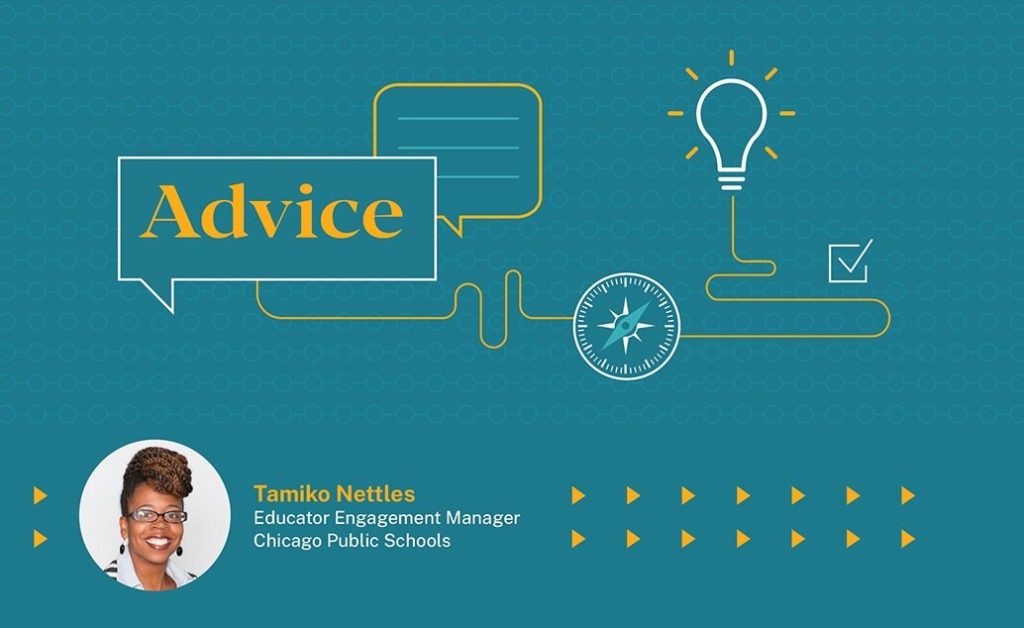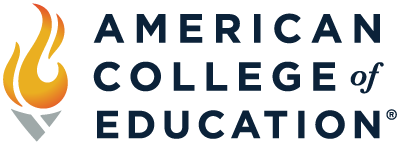
Tamiko Nettles, educator engagement manager for Chicago Public Schools, is putting her Master’s in Educational Leadership from American College of Education to good use these days as she helps the nation’s third-largest school district navigate the coronavirus pandemic. She shares some of the valuable insights she’s learned on how teachers can stay connected, positive and innovative in the virtual classroom.
ACE: It seems as though there are many ways to foster student discussion in online learning, but teacher-to-teacher collaboration may fall by the wayside, especially during a time like this. What are some tips you have for educators looking to stay connected and learn with their peers?
Tamiko Nettles: There’s a lot of power in reaching out. Educators are reaching out to other educators because lots of us are posting what we’re doing to connect with our students, with parents and with each other. Don’t be afraid to say, “Hey, I see you’re doing this. That’s amazing! How can I do that?” That reach-out is super important. This whole experience is very humbling.
I’m staying connected by having virtual trivia nights, inviting everyone to play a game or video chatting. This can be in your down time or at work. Just getting people together, celebrating and talking about what’s going on helps everyone stay connected.
ACE: Are there any tools or platforms you’ve found most effective for creating connection between teachers?
TN: When I first started teaching [in 2000], collaboration looked a lot different, but now it’s much easier to give feedback and collaborate with Google Suite. Google Docs, Google Sheets, all the way to Google Hangouts — those are huge when it comes to staying connected.
Twitter and LinkedIn are also great platforms to connect with other educators, teams or organizations that are doing things to bring people together. There’s a lot happening over there!
ACE: With so much happening at home and in the headlines, what suggestions do you have for administrators to boost staff engagement and morale to keep e-learning effective?
TN: I actually had to do this this week with the teams I’m currently working with. First, be very intentional about checking in and asking, “How are you?” As leaders, we’re often thinking about whatever it is we want to get out of that meeting, but before even having that meeting, check in with the people who are there and spend some time hearing from them. That one thing does wonders: asking and really listening.
Also, it’s important to celebrate success as a team. I always try to let people know what good things I see them doing. I like to be very specific; I don’t just say, “Great job.” I want them to know I see exactly what they’re doing and that it’s important. Try to find things to celebrate. So many things are happening, and when you look at the news, it gets overwhelming. Encourage your team to focus less on the headlines and more on each other.
And last, don’t be afraid to show your team that you’re struggling too. I don’t have all the answers, and I want everyone who knows me to know that I’m still learning. When administrators are able to say that, it makes everyone feel more human, and it brings the team together.
ACE: How are you planning to sustain the practices you’re putting in place now for the foreseeable future?
TN: We’re all in a moment of movement, but also in a moment of pause. This whole situation has forced us to think about our roles and how we can utilize the tools we have, even in this state. Even though we can’t physically be with someone else, we have so many ways to connect: We can talk on the phone, we can video chat, we can connect on social media. The work can still be done; it’s just the medium that’s changing.
When I think about the future, I try to remember that it doesn’t matter if you’re physically in front of somebody. You can still do all the same things. You can still celebrate, praise, connect and acknowledge the good that people are doing in any medium. If we’re intentional about doing that, it can be sustainable. This time is all about being creative and coming up with new ways to do all the things we were already doing.
ACE: As the fallout from this pandemic continues, what is the one piece of advice you would give administrators trying to work their way through something for which there really isn’t a manual or a roadmap?
TN: When all of this started, I immediately started researching how to do things virtually. I moved back into the headspace of a learner and looked to experts who have done this before. It all goes back to being honest if you don’t know something, even if it makes you feel vulnerable. By admitting that you don’t have all the answers, you actually gain more, and there are people who will jump to help you.
ACE: You have 20 years of experience in education and leadership. What’s the top takeaway you’ve gained over the years regarding engagement and innovation?
TN: It’s helped to have this quiet time because it’s allowed me to look back on things I did a long time ago. I still have my gradebook from my first year of teaching — some of those students are teachers themselves now — and looking through it got me thinking about my “Why?”
My whole leap into education was based on something that happened in my high school experience. I didn’t want anybody else to have to go through what I went through, and that’s why I decided to go to school for this. Our students deserve a great education, and we owe it to them to keep thinking of ways to be better.
When I try to think of a big takeaway, I just have the Nike quote in my mind: “Just Do It.” I have so many ideas for how to innovate and improve, and if I stop on an idea and never bring it to fruition, it’ll never happen. If you think of something, do it. The only thing that won’t happen is the thing you don’t do. Don’t limit your belief in what can be done, because you’ll do yourself and your students a disservice.

